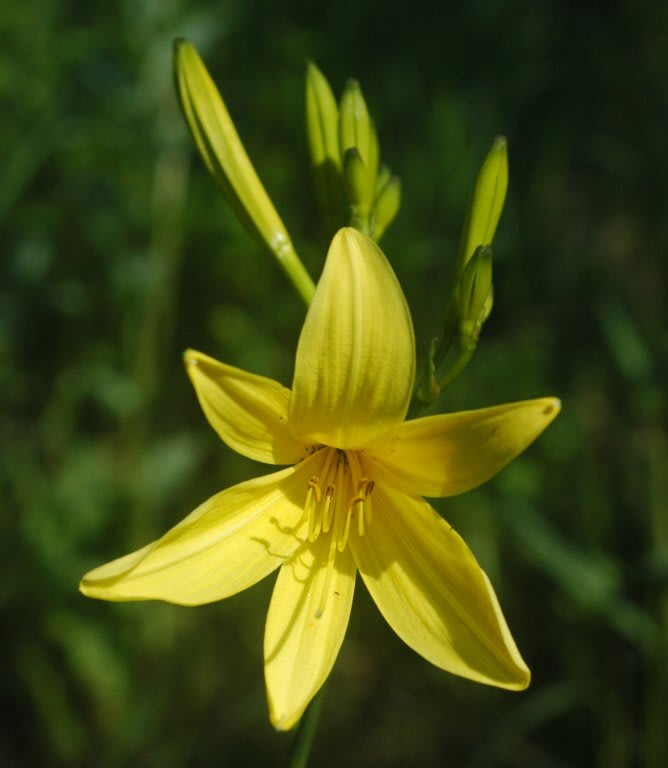
🌿 Morphology
🌞 Growing conditions
🌍 Origin and family
🌾 Uses
Warning: Despite the care taken in writing this sheet, it is essential to cross-reference sources before using or consuming any plant. When in doubt, consult a qualified professional
Permaculture uses
Edible flowers (raw or cooked), young shoots, and tubers. Flowers can be used to thicken soups or as a garnish. Reported to have medicinal properties, acting as a diuretic and hemostatic. Useful in erosion control due to its dense root system. Attracts pollinators. No major cultivars specifically for permaculture noted.
Permapeople description
Despite it's name it is not a lily. Edible for humans but toxic for cats.
Botanical description
Hemerocallis lilioasphodelus, commonly known as the Lemon Lily, is a herbaceous perennial plant in the family Asphodelaceae. It features strap-like, arching leaves that emerge from a dense clump. The plant typically reaches a height of 1-3 feet. Its fragrant, lemon-yellow flowers are trumpet-shaped and bloom in the early summer. Each flower lasts only one day, hence the name "daylily," but numerous buds on each scape ensure a prolonged blooming period. The fruit is a capsule containing black seeds.
Companion planting
Generally considered a good companion plant. Can be used as a ground cover around taller plants. Not known to have significantly beneficial or detrimental effects on other plants.
Propagation methods
Division of clumps is the easiest and most common method. Seeds can be sown, but may not breed true. Root cuttings are also possible, though less common.
History and traditions
Historically, daylilies have been used in traditional Chinese medicine. Some cultures have consumed the flowers and tubers as a food source. The plant is also cultivated for ornamental purposes.
Usage calendar
Flowering: Early summer (June-July). Division: Spring or Fall. Planting: Spring or Fall. Harvesting flowers: During blooming period. Seed collection: Late summer.
